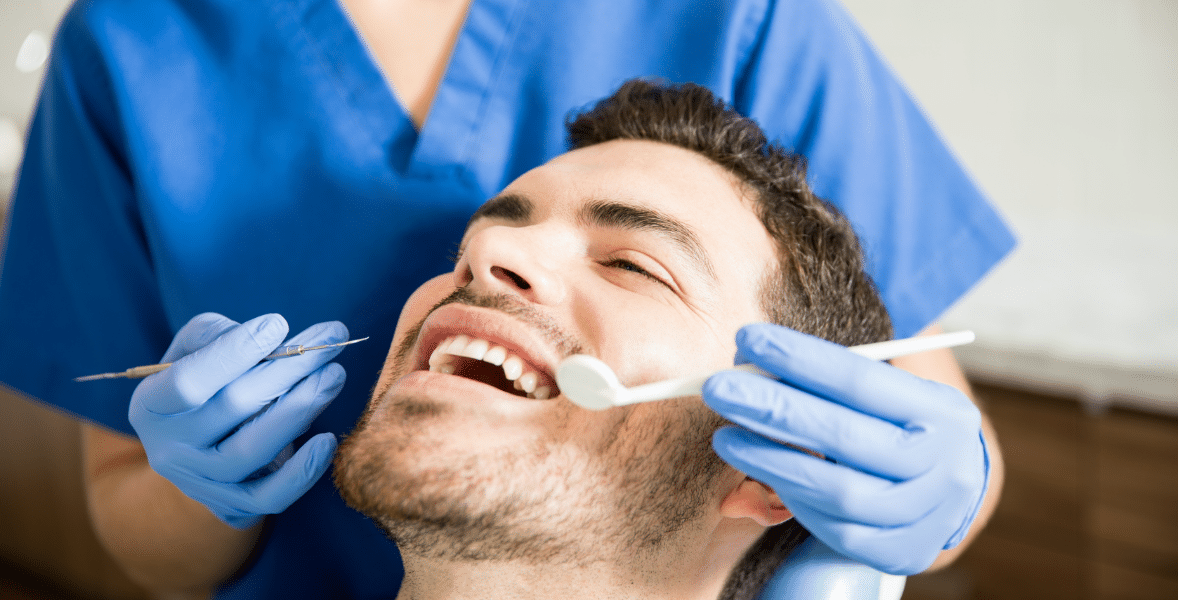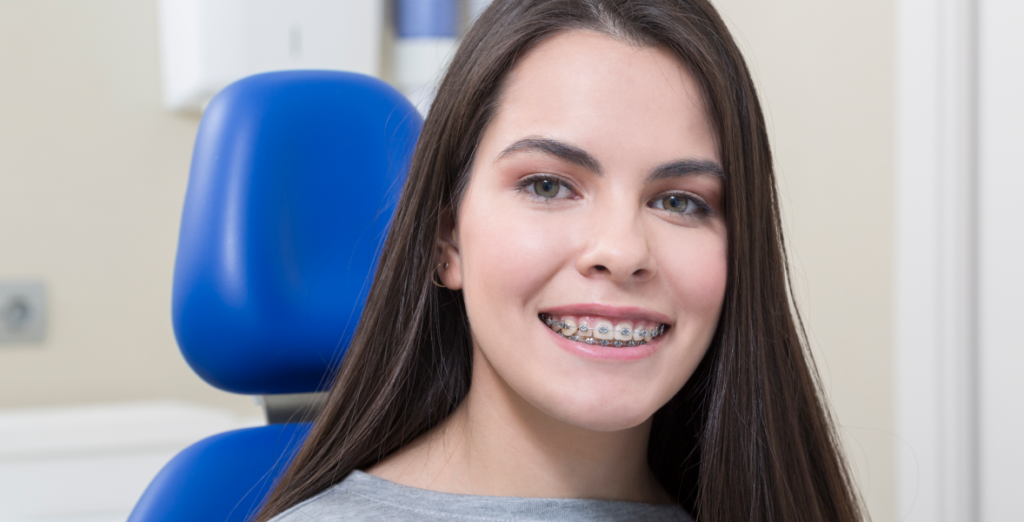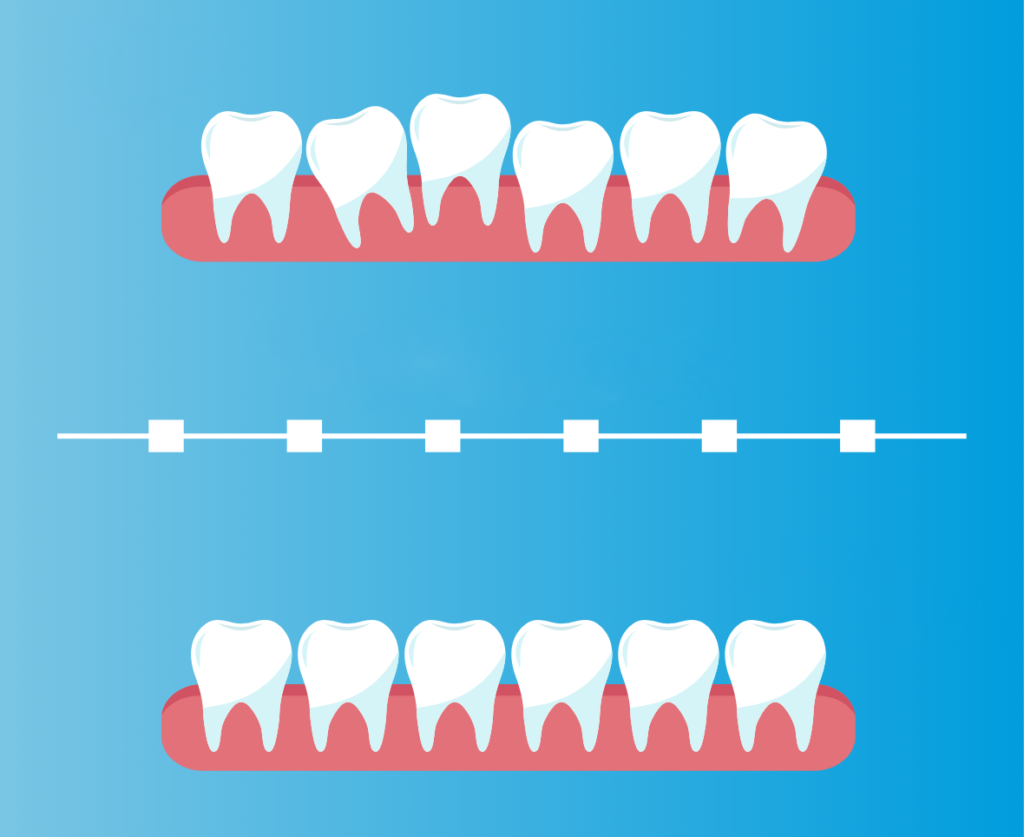This treatment is for you if…
You want to align your teeth or improve your bite, whether you are a child or an adult.
What are orthodontics?
Orthodontics are a type of dental treatment that studies, prevents and corrects dental problems, such as divergences in the position of teeth, crowding or diastemas(spaces between teeth) and the shape of dental arches or bite problems, to restore the balance between the shape and function of the mouth, also improving facial aesthetics.
Furthermore, orthodontics tackle larger problems, such as the correction of jaw, upper maxillary bone or even face alterations and, especially, functional bite disorders.
Types of orthodontics
There are different types of orthodontics, based on the technique and material used. The choice is usually determined by aesthetics and price, but it also depends on the needs of each patient.
There are three main types of orthodontic treatments: invisible orthodontics, lingual orthodontics and brackets. The latter, in turn, are divided into different types, according to the material used.
Invisible orthodontics
A group of transparent mouth guards that are individually adjusted to each of the teeth. At first sight, they are invisible and more comfortable, since teeth movement is more gentle. They can be removed to brush teeth, so it is easier to maintain good hygiene.

Lingual orthodontics
In this treatment, brackets are placed behind the teeth so they are invisible from the outside. They are manufactured on a personalised basis for each patient. Despite being placed behind the teeth, they do not make it difficult to talk or chew. It is the most aesthetic orthodontic solution.

Brackets
A series of parts joined by an arch that attach to the front part of the teeth. Different types of brackets exist, based on the materials used:

Metallic brackets
Made of steel, they are strong and have very high resistance to rust and damp. These are the classic brackets and are most common in children and adolescents. They are the most economical and achieve excellent results, although they are the least aesthetic. The remaining brackets are deemed to be aesthetic.
Ceramic brackets
They are opaque white, much more aesthetic than metallic brackets and have the same functions. They do not stain over time, representing an advantage with respect to resin brackets.
Sapphire brackets
They are also transparent, which makes them virtually invisible and very discreet. Due to their structure, they reveal the colour of the teeth and they do not become stained or change colour. The placement of teeth is as effective as with the rest of the brackets.
Metallic self-ligating brackets
Unlike conventional brackets, self-ligating brackets avoid the use of elastic bands to attach them to the arch. In their place, the self-ligating brackets use a clip mechanism that generates less friction.
Aesthetic self-ligating brackets
For a better appearance, self-ligating brackets can also be made of ceramic. Ceramic brackets are more discreet and enable the colour of the teeth to be seen, which offers a better aesthetic aspect.
Advantages of orthodontics
Aside from the known aesthetic advantages of orthodontic treatment, there are other highly important advantages related with the functionality of the mouth and even the patient’s health.
- Improves digestion, as a result of enhancing the patient’s bite when chewing.
- Avoids headaches and earaches, related, on many occasions, with the position of our mouth and the temporomandibular joint.
- Avoids pulled muscles in the neck and back since teeth fit together.
- Avoids the wear and tear of teeth thanks to the better fit.
- Prevents oral problems such as periodontitis.
- Improves oral hygiene, on correcting the spaces and the crowding of the teeth, brushing may become more efficient and avoid problems, such as tooth decay or infections.
- Improves the development of the mouth when the orthodontics are carried out in children, which prevents harmful habits that may deform tooth position.
- Improves the patient’s smile aesthetically, which helps them to have more self-esteem and gain confidence in social relationships.

Orthodontic treatment phases
Orthodontic treatment comprises five phases, which begin with a study of the patient’s situation and end with the fitting of retainers once the brackets have been removed. The five stages are as follows:
1. Orthodontic study. Through x-rays, photographs and a cephalometry, a totally personalised treatment is planned, recommending the brackets that best adapt to the patient.
2. Fitting of brackets. Once planned, the orthodontic brackets are placed and daily habits and practices are recommended to correctly maintain the brackets.
3. Frequent check-ups. They will serve to assess the progress of the orthodontics and to adjust the items to make them more effective. The frequency will depend on the treatment, which may last between six months and three years.

4. Removal of brackets. Once the objectives have been attained, the brackets will be removed and the teeth will be cleaned.
5. Fitting of retainers. Once the brackets have been removed, the teeth ligaments must assimilate the change, and retainers are placed on a continuous basis for the first three months and then partially.
Some patients also opt for teeth whitening once the treatment has ended.
Frequently asked questions
Orthodontics is a branch of odontology that specialises in correcting the position of teeth, the bite between the arches and helps the growing jaw to develop correctly, If you have twisted or crowded teeth or an incorrect bite, orthodontics may be the solution, both to improve the appearance and the function of your mouth.
Different types of orthodontic devices exist, including traditional metallic brackets, transparent brackets, transparent removable aligners (invisible orthodontics) and removable devices. The choice depends on individual needs and preferences.
Orthodontic treatment generally begins with a full assessment and the taking of x-rays and study models. Then the orthodontics devices chosen are fitted and frequently adjusted. The treatment may last from a few months to various years, depending on the complexity of the case.
During the orthodontic treatment, you may have to avoid certain hard or sticky foods that may damage your apparatuses. Dental hygiene is also crucial and you will need to brush your teeth and use dental floss carefully and frequently to avoid the accumulation of plaque and tooth decay.
The cost of orthodontics varies according to the case and the type of orthodontics used.
Remember that you can request a free check-up with one of our experts to assess your case in person and prepare a detailed quote.
Prices
The amounts indicated have been estimated in line with a full treatment, in accordance with the parameters in the table. Includes: study, treatment and check-ups during the treatment, so it serves as a guide and is of a merely informative non-contractual nature. The personalised treatment will be examined in line with the medical prescription. Prices can be increased if additional costs are incurred as a result of the requests made by each customer. Price valid until 31 December 2024 except in the event of a typing error.



